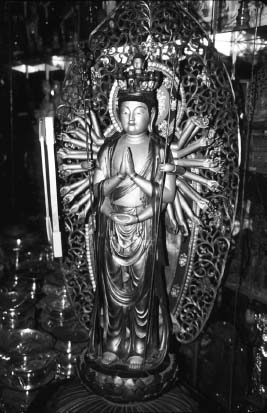BuddhismReligious Beliefs |
What is the Eightfold Noble Path? |
True to his hardheaded realism, the Buddha did not send his followers off on a wild goose chase. He suggested a method for achieving a balanced approach to everyday experience. Buddhists call his teaching the Middle Path because it aims at balance, propriety, and equanimity. Eat what you need and use whatever is necessary for a modest style of living. The eight elements in the classical formulation of the standards for such a life are divided into three larger categories: wisdom, ethics, and concentration. Achieving wisdom requires proper belief in the form of deep understanding of the Four Noble Truths, and proper intent, which means that one performs all acts out of compassion rather than out of selfish motives.
The next three steps on the Path involve ethics. Proper speech means avoiding all evils of the tongue. Proper action, expressed negatively, means refraining from inappropriate sexual relationships, killing, and stealing. And proper livelihood calls for the avoidance of occupations that cause harm, such as dealing in slavery or weapons.
Training in concentration also has a triple foundation. Proper effort means perfect balance in one’s attitude toward work. Proper attentiveness flows from deep reflection on the Four Noble Truths. And proper absorption, a lofty goal, means the ability to be genuinely content in equilibrium between pursuing goals and running from fears. Everything depends on carefully measured responses. That does not necessarily mean the death of spontaneity. It means a habit of discipline and keen awareness of one’s personal motivations.
The Four Noble Truths
| The Noble Eightfold Path | Threefold Training |
| 1) Right views | |
| Wisdom (prajña) | |
| 2) Right intention | |
| 3) Right speech | |
| 4) Right action | Morality (shila) |
| 5) Right livelihood | |
| 6) Right effort | |
| 7) Right mindfulness | Concentration (samadhi) |
| 8) Right absorption |

Statue of the thousand-armed eleven-headed bodhisattva Guan Yin, in a religious goods store, Keelung, Taiwan, the port city of the Taiwanese capital of Taipei.
